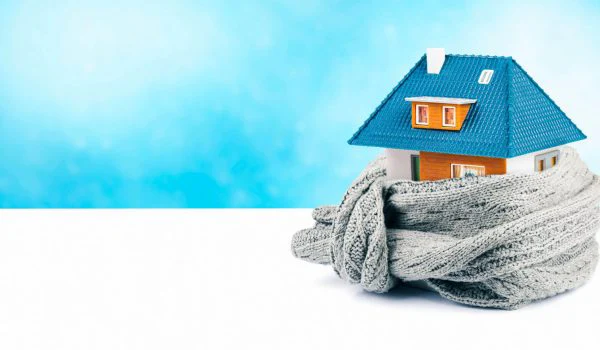
Where Is R38 Insulation Used? Recommended Areas and Climate Zones
Homeowners in Los Angeles ask about R38 because it hits a sweet spot: strong thermal resistance without overbuilding. R-value measures how well insulation resists heat flow. R38 performs well in mixed and warm climates, especially in attics where heat gain and loss are highest. In greater Los Angeles, an attic with R38 often cuts cooling loads, dampens street noise, and stabilizes indoor comfort during heatwaves and cool nights.
This guide explains where R38 belongs, how it fits local building codes and climate zones, and how Pure Eco Inc. installs it cleanly in Los Angeles homes from the Valley to the South Bay.

R38 by the numbers
R38 is typically achieved with about 10 to 12 inches of fiberglass batt, roughly 10 inches of high-density fiberglass, about 10 inches of open-cell spray foam, or around 5.5 to 6 inches of closed-cell spray foam. In blown-in cellulose, expect around 10.5 to 11.5 inches depending on settled density. Actual thickness varies by product and brand, so field measurement matters. An installer verifies installed thickness and coverage after settling to make sure the real R-value matches the plan.
Where R38 insulation is commonly used
Attics come first. In the Los Angeles basin and nearby valleys, the attic is the largest thermal weak point. R38 attic insulation blocks daytime heat gain from sun-baked roofing and slows nighttime heat loss during marine layer mornings. It also reduces duct losses when HVAC equipment and ducts sit in the attic, which is common in older LA housing stock.
Floors over garages benefit from R38 when bedrooms sit above an unconditioned garage in neighborhoods like Sherman Oaks, Culver City, or Pasadena. The garage acts as a heat reservoir; R38 in the floor assembly keeps rooms above it stable and quieter.
Cathedral ceilings often call for R38 where cavity depth allows. Many mid-century and post-war homes in Los Feliz, Westchester, and Brentwood have low-slope or vaulted ceilings. Dense insulation with proper ventilation prevents radiant heat from soaking living spaces. If rafters are shallow, a combination of rigid foam above the roof deck plus batt or spray foam in the cavity can reach R38 without ventilation conflicts.
In new additions, accessory dwelling units, or garage conversions, R38 is standard practice for roof assemblies to pass Title 24 energy compliance while keeping summer interiors manageable without oversizing the mini-split.
How R38 fits California climate zones
California’s energy code uses state climate zones, while the national model uses IECC zones. Most of Los Angeles County falls under warm, cooling-dominant zones where the code emphasizes attic R-values for load reduction.
- Coastal LA (Santa Monica, Venice, Redondo Beach): Sea breezes and marine layer moderate heat, but attics still face strong solar load. R38 in the attic often meets or beats Title 24 performance targets without adding roof foam.
- Central LA and Westside (Westwood, Mid City, Hancock Park): Dense lots and dark roofs drive roof deck temperatures. R38 helps maintain comfort and supports right-sized HVAC.
- San Fernando Valley and San Gabriel Valley (Encino, Burbank, Glendale, Pasadena): Hotter summers and big diurnal swings. R38 in attics is practical baseline; radiant barriers and air sealing further improve peak-hour performance.
- High Desert edges of LA County: Some homes benefit from R38 to R49 depending on roof design and HVAC location. An energy model clarifies the gain from going beyond R38.
Local code compliance is performance-based, so a well-sealed attic with R38 often meets requirements. In older homes, upgrading from R0 to R38 can reduce cooling loads by 15 to 25 percent, sometimes more if attic ducts are leaky and get sealed during the project.
Attic R38: what changes day to day
Homeowners usually feel two shifts after a proper R38 attic upgrade. First, late afternoon rooms under the roof no longer spike in temperature; the thermostat cycles less from 3 to 7 p.m. Second, mornings feel less chilly after clear nights. These changes are obvious in single-story bungalows in Eagle Rock and Valley ranch homes where the roof spans the entire living space.
If ducts run through the attic, R38 insulation works best with air sealing. Sealing top plates, can lights (IC-rated), plumbing and flue penetrations, and the attic hatch reduces infiltration. This combination—air seal plus R38—usually outperforms insulation alone by a wide margin.
Where R38 is too much or not enough
Wall cavities in Los Angeles rarely support R38. Standard 2x4 walls fit up to R15; 2x6 walls allow around R21 to R23. If a project seeks R38 in walls, it usually involves exterior rigid foam plus cavity insulation or advanced assemblies during major remodels.
Crawl spaces or floors above conditioned space do not need R38. The insulation belongs at the building envelope boundary. If the crawl space is vented and stays cool, floor insulation may range from R19 to R30. In hot Valley locations with slab-on-grade, floor insulation is often unnecessary unless part of a high-performance build.
For mountain or cold-climate projects outside LA, attics may benefit from R49 to R60. Within Los Angeles proper, R38 is a strong balance of performance, budget, and headroom for future HVAC downsizing.
Product options that hit R38
Fiberglass batts are cost-effective for open joist bays. They require accurate cutting, full-depth fill, and no compression under boards or platforms. Many DIY jobs fall short because storage decking squashes the insulation; that drops performance. A raised storage platform or attic truss shelving avoids compression.
Blown-in cellulose creates a continuous, gap-free blanket across irregular framing, common in older LA roofs. It performs well against convective looping and covers the many odd corners found in 1930s to 1960s houses. Depth markers and rulers help verify true R38 after settling.
Open-cell spray foam reaches R38 at greater thickness but seals air leaks at the same time. It is useful in vaulted ceilings or complex rooflines where venting is limited. Closed-cell spray foam reaches R38 at about 5.5 to 6 inches and adds structural rigidity and vapor resistance. Installers need to manage ventilation, ignition barriers, and curing conditions carefully.
Rigid foam above the roof deck is an exterior strategy used during reroofing. Two layers of staggered seams reduce thermal bridging and can deliver R38 in combination with cavity insulation below. This approach suits modernizations in Studio City, Silver Lake, or Manhattan Beach where clients plan new roofing anyway.
Ventilation, vapor, and moisture in LA homes
Los Angeles roofs run hot. Venting helps carry heat and moisture out of the attic. Balanced intake at the eaves with exhaust at the ridge promotes airflow. In older homes without a ridge vent, gable vents and continuous soffit vents can still work when laid out correctly. Where a roof is unvented and uses spray foam at the roof deck, foam becomes the air and vapor control layer. The assembly strategy matters more than a single product choice.
Indoor moisture is usually low in the LA basin. Vapor retarders under attic insulation are often unnecessary, but kitchens and bathrooms should vent outdoors. In homes near the beach, salt air and humidity suggest careful detailing around skylights and duct penetrations to prevent condensation during cool nights.
Noise, fire, and clean attic strategy
R38 adds noticeable sound dampening, especially with dense cellulose or open-cell foam. On flight paths under LAX or Burbank, clients report softer ambient noise after upgrades. For fire safety, recessed lighting should be IC-rated and fire-safe covers should be used where needed. Chimney and flue clearances require noncombustible shields with proper gaps. A clean attic includes sealed penetrations, baffles at the eaves to protect airflow, and a weather-stripped insulated hatch.
Cost ranges in Los Angeles
Pricing varies with access, prep work, debris removal, and product choice. Typical LA projects for attic R38 land in these ranges:
- Fiberglass or cellulose blown-in: often $2.50 to $4.50 per square foot installed, including basic air sealing and baffles.
- Spray foam: often $5.50 to $9.00 per square foot depending on thickness and fire coatings.
Two-story homes, tight hatches, and knob-and-tube remediation raise costs. Homes with vermiculite, rodent contamination, or old duct removal need abatement or sanitation steps before insulation goes in. Pure Eco Inc. inspects before quoting, then produces a scope you can verify.
Where R38 meets Title 24 and energy rebates
For many Los Angeles homes, R38 in the attic qualifies for utility rebates when paired with air sealing and duct sealing. Programs change every year. Documentation usually requires pre- and post-photos, depth markers, and sometimes blower-door tests. Pure Eco Inc. handles paperwork and coordinates inspection so rebate dollars do not slip through the cracks.
Quick decision points for homeowners
- If the attic has less than 6 inches of insulation or shows bare joists, upgrading to R38 usually pays back in 3 to 6 years based on typical LA cooling costs and rate tiers.
- If the roof needs replacement within two years, consider exterior rigid foam plus interior insulation to reach or exceed R38 with better control of thermal bridging.
- If ducts run in the attic, combine R38 with comprehensive air sealing for the best results.
- If rooms under the roof run hot after 3 p.m., check attic ventilation and radiant heat pathways before upsizing HVAC.
Why Los Angeles homes benefit from R38 now
LA is seeing hotter summers and higher evening setpoints due to time-of-use rates. R38 reduces peak-hour loads when electricity costs more. It also supports future upgrades: smaller heat pumps, quieter operation, and less cycling. From Spanish revivals in Hancock Park to ranch homes in Woodland Hills, a clean attic with R38 becomes the cornerstone of a comfortable, quiet, efficient home.
Talk with a local crew that knows your roofline
Pure Eco Inc. installs attic insulation Los Angeles R38 insulation Los Angeles homeowners can count on. The team evaluates attic framing, ventilation, fire clearances, and duct layout before pricing. They work neatly, protect living spaces, and document every step. If a house sits in Mar Vista, Atwater Village, or the Valley, the crew has likely handled a similar roof and knows the quirks.
Ready to stabilize summer afternoons, cut HVAC runtime, and meet code with confidence? Call Pure Eco Inc. or request a visit online. A short site check is enough to confirm whether R38 is right for the home and which assembly will perform best for the neighborhood and budget.

Pure Eco Inc. provides professional attic insulation and energy-saving solutions in Los Angeles, CA. For over 20 years, our family-owned company has helped homeowners improve comfort, reduce utility bills, and make their homes more energy efficient. We specialize in insulation upgrades, spray foam installation, and attic cleanup for homes across Los Angeles County. At Pure Eco Inc., we believe in treating our customers like family and creating a greener, healthier living environment for every household we serve. Call today to schedule an attic insulation inspection or get a free estimate. Pure Eco Inc.
422 S Western Ave #103 Phone: (213) 256-0365 Website: https://www.pureecoinc.com Social Media:
Facebook |
X |
Instagram |
Yelp
Map: View on Google Maps
Los Angeles,
CA
90020,
USA